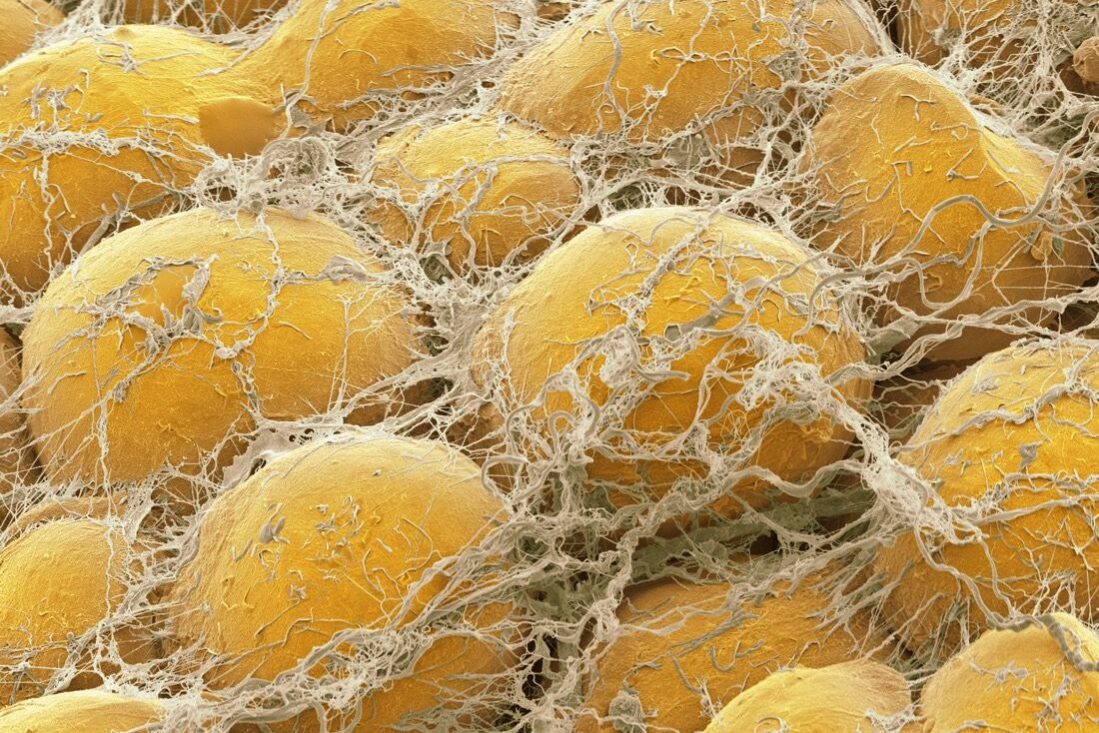The removal of old and dysfunctional cells in human fat also relieves the signs of diabetes, UConn Health researchers reported. The breakthrough could lead to new treatments for type 2 diabetes and other metabolic diseases.
Senescent cells
The cells in your body are constantly being renewed, and older cells age and die as new ones are created. But sometimes that process goes wrong. Occasionally, damaged cells called senescent cells remain, and act as a bad influence on other neighboring cells. Their bad influence changes the way neighboring cells handle sugars or proteins and thus, cause metabolic issues.
Type 2 diabetes and senescent cells
Type 2 diabetes is the most common metabolic disease in the United States. About 34 million people, or one in 10 Americans suffer from it, according to the Centers for Disease Control and Prevention (CDC). Most people with diabetes have insulin resistance, which is associated with obesity, lack of physical activity, and a poor diet. But it also has much to do with body fat senescent cells, according to new findings by Ming Xu and her colleagues at the UConn Health School of Medicine. And removing those senescent cells seems to stop diabetic behavior in obese mice, they reported in the November 22 issue of Cell Metabolism. Ming Xu, an assistant professor at the UConn Center on Aging and the department of Genetics and Genome Sciences at UConn Health, led the research, along with UConn Health researchers Lichao Wang and Binsheng Wang as major contributors.
Alleviating the negative effects of fat on metabolism was a dramatic result, the researchers said. If a therapy worked that well in humans, it would be a revolutionary treatment for diabetes.
The findings
Xu and his colleagues tested the effectiveness of a combination of experimental drugs, dasatinib and quercetin. Dasatinib and quercetin have already been shown to increase the lifespan and good health of old mice. In this study, they found that these drugs can kill senescent cells from human fat tissue cultures. The tissue was donated by obese people who were known to have metabolic problems. Without a treatment, the human fat tissue induced metabolic problems in immunocompromised mice. After treatment with dasatinib and quercetin, the harmful effects of fat tissue were almost eliminated. These drugs can make human fat healthy, and that could be great. The results were very impressive and paved the way for potential clinical trials, according to Ming Xu, assistant professor, UConn Center on Aging.
The future
Xu and his colleagues at UConn Health and the Mayo Clinic are now looking to use the combination of dasatinib and quercetin in clinical trials to see if the drugs can improve type 2 diabetes in human patients. “Although these preclinical results were very promising, large-scale clinical trials are absolutely critical to assess the effectiveness and safety of these drugs in humans prior to clinical use,” Xu emphasized. The research team is also focusing on a previously unexplored population of senescent cells. These senescent cells express high levels of p21, a cyclin-dependent kinase inhibitor and one of the key markers of cellular senescence.
Using a newly developed mouse model, Xu’s team showed that removing these senescent cells once a month is effective both for slowing the development of diabetes and for relieving diabetic symptoms developed in obese mice. Xu said that previous research has focused on different cell markers, but that the effects of eliminating cells that largely express p21 were so effective to improve diabetes that this marker should receive more attention.
The research was funded primarily by the National Institutes on Aging, the Mayo Clinic Diabetes Professional Development Regenerative Medicine Initiative Award, the Esperance Grant for Personalized Nutrition, and the American Federation for Research on Aging.
Link: https://www.sochob.cl/web1/eliminar-las-celulas-viejas-y-disfuncionales-de-la-grasa-alivia-la-diabetes/
Date: November 24th, 2021
Source: https://www.news-medical.net
Nutrigenomics Institute is not responsible for the comments and opinions included in this article
Reference: Wang L, Wang B, Gasek NS, et al. Targeting p21Cip1 highly expressing cells in adipose tissue alleviates insulin resistance in obesity. Cell Metab. 2021 Nov 19:S1550-4131(21)00530-1.






